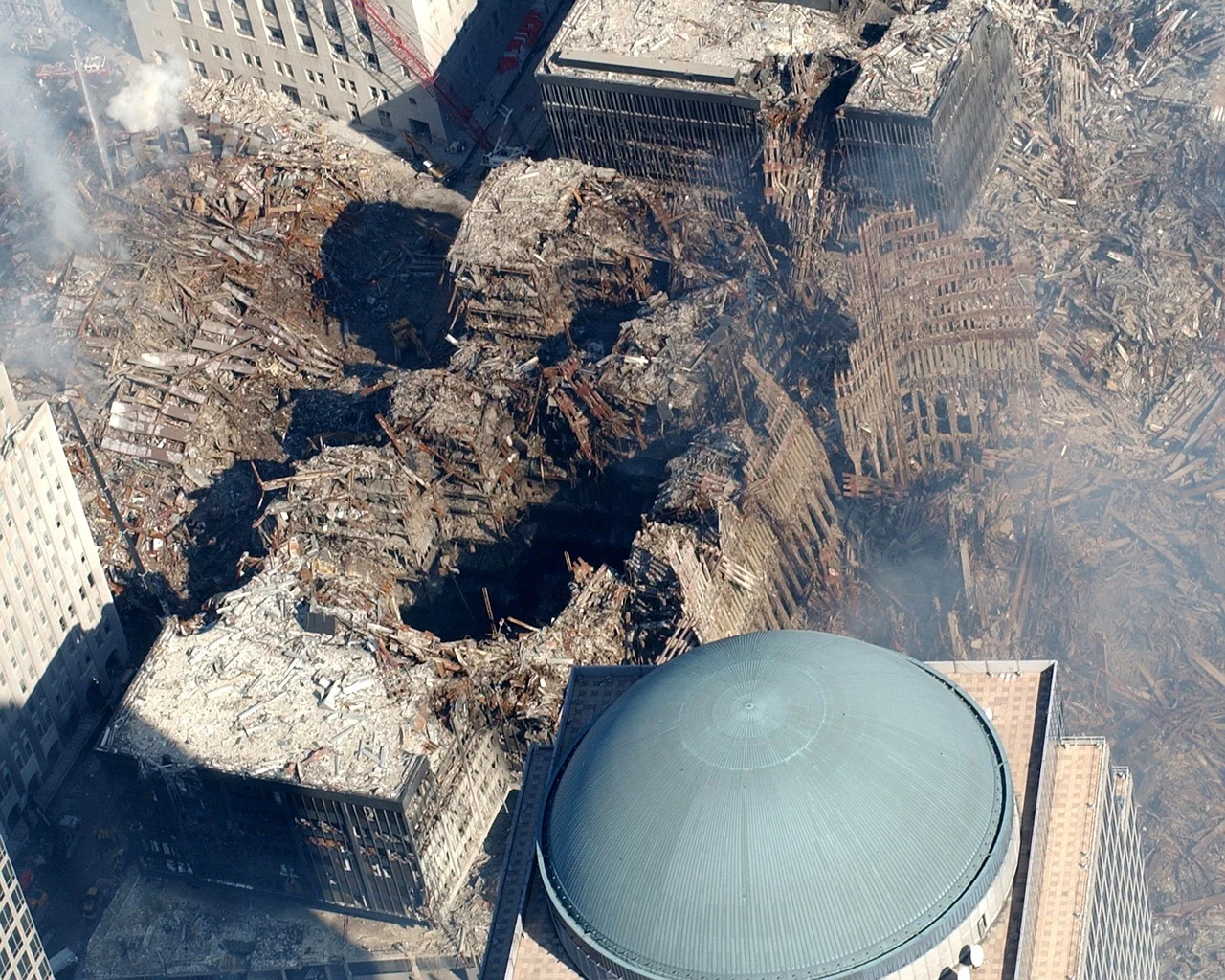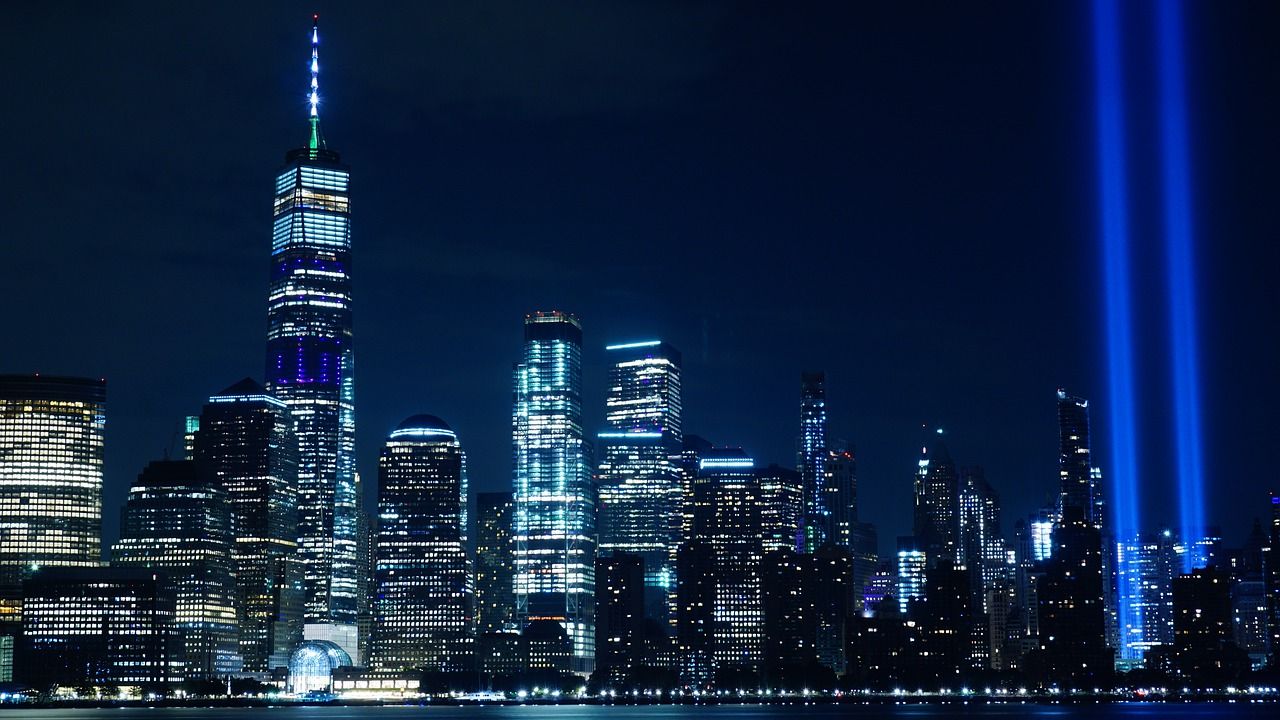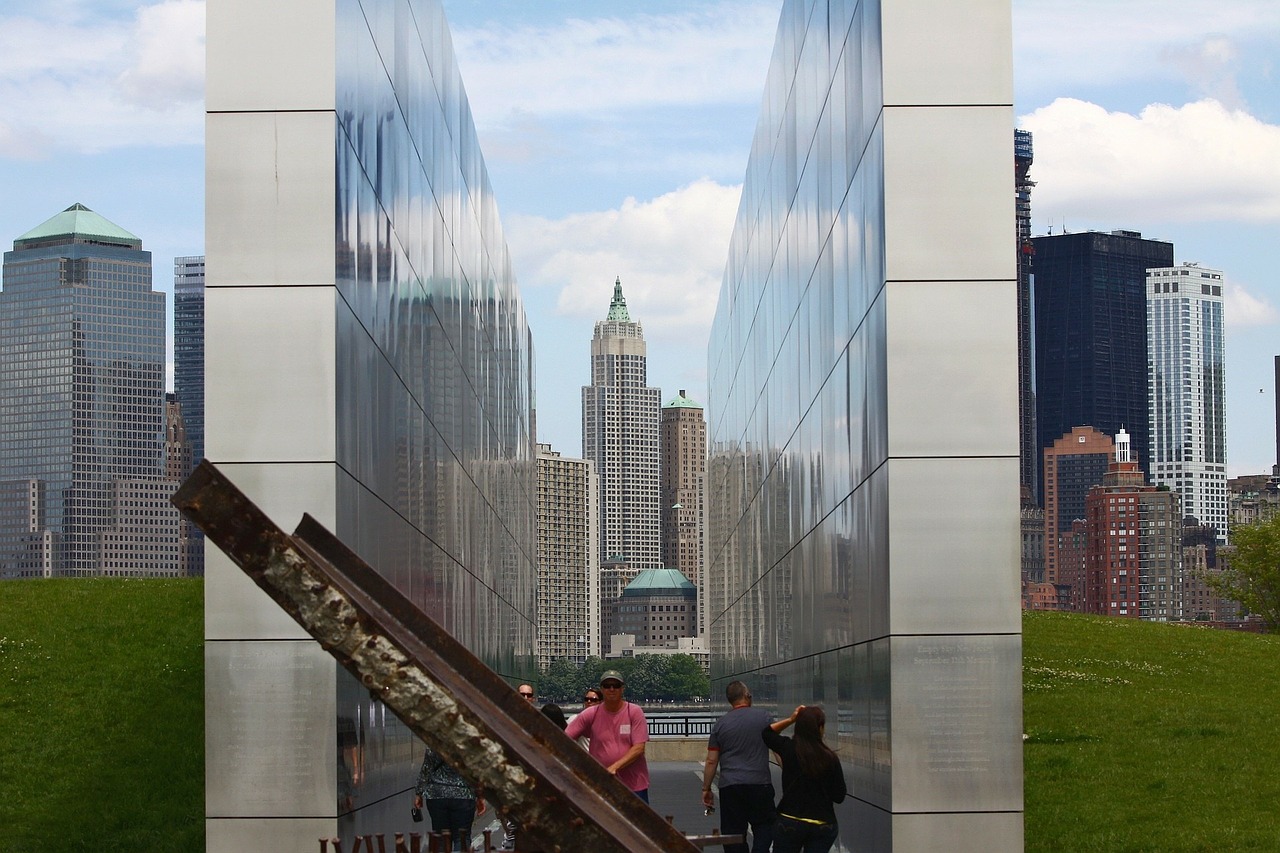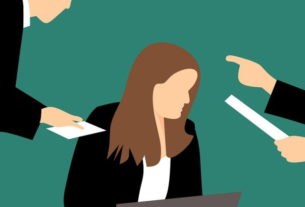Alice Greenwald: “The 21st century started right there – at Ground Zero”
Sven Lilienström, founder of the Faces of Peace initiative, spoke with the President and CEO of the National September 11 Memorial and Museum Alice M. Greenwald about peace, the COVID-19 pandemic, and her personal “9/11 story”.
In the terrorist attacks on September 11th, 2001, 2,977 people in the USA lost their lives when members of the Al Qaeda terror network flew two passenger airliners into the Twin Towers of the World Trade Center in New York. The National September 11 Memorial and Museum, opened by President Barack Obama in 2014, commemorates the victims of the terrorist attacks. Sven Lilienström, founder of the Faces of Peace initiative, spoke with the President and CEO of the National September 11 Memorial and Museum Alice M. Greenwald about peace, the COVID-19 pandemic and her personal “9/11 story”.
Ms. Greenwald, the Faces of Peace initiative aims to highlight existing and future potential conflicts and find diplomatic solutions. What does “peace” mean for you personally?
Peace is about living with dignity and a sense of security; it is both a state of mind and a state of being. It is about living with an absence of fear about disruptions of normalcy; it is the promise that you and your loved ones can live productively in community. And, it requires acceptance of diversity and mandates that we respect one another. In fact, to achieve peace, we need to see ourselves in others, recognize and affirm our common humanity, and celebrate what connects us, rather than what separates us. It is about conscientiously not seeing “the other” but rather seeing “all of us.”
Now, in light of the COVID-19 pandemic, I would add that to achieve peace, we must recognize our global interdependency: that we live in this sacred world together, and what happens in one place happens to all – whether it be the transmission of disease, the challenge of global warming, or the connectedness of our economic markets. Peace will be the outcome of a brave new world where we collectively recognize the primacy of sharing resources for the betterment of all.
You have been the President and CEO of the National September 11 Memorial and Museum since January 2017. How did you experience the terrorist attack on the Twin Towers of the World Trade Center on September 11th, 2001?
I had just moved to Washington, DC, in early September 2001, to take on the job of Associate Museum Director at the United States Holocaust Memorial Museum. I was unpacking moving boxes on the morning of September 11, 2001, and we had a carpenter at the house to do some work.
My (then) husband, who was then Director of Marketing at the World Wildlife Fund, was on his way to New York City for a meeting, and he called me shortly before 9:00am to ask what was going on? His train had stopped just north of Philadelphia; it wasn’t moving; passengers weren’t being told why, and he was frantic that he would be late for an important 10:00am meeting in Manhattan.
I turned on the TV and watched, in utter disbelief and horror, as I recounted to him what I was seeing on the news. We ended the call – I didn’t connect with him again for nearly 10 hours. Meanwhile, I was riveted to the television, as the carpenter – whom I had only met that morning – and I watched the unfolding and unimaginable news.
When the South Tower collapsed shortly before 10:00am, all I could think was: “Those people! Those poor people!” And, the carpenter and I did the only thing we could possibly do at that moment. Even though we were, for all intents and purposes, strangers, we grabbed one another and held on tight to each other, in our utter grief and disbelief and our shared inability to comprehend what we had just witnessed.
A few minutes later, I left to pick up my daughter at her high school – I simply had to have her home with me. And, as a new resident, I barely knew how to drive there! I called my son at his school in Pennsylvania to make sure he was okay. Meanwhile, my husband (I would find out hours later) was in Maryland. The train he was on, not being able to get into New York City, began to backtrack to D.C., only to be stopped when the Pentagon was hit at 9:37am.
With the train unable to proceed to Union Station in D.C., Amtrak made the decision to vacate the train in Wilmington, Delaware. He and his colleagues disembarked and then he called our brother-in-law who lived not far from Wilmington; they were picked up and spent the rest of the day and night in Chestertown, Maryland, until they could make their way back to D.C. the following day.
That was my experience on the day of the 9/11. My personal “9/11 story,” however, took place a month later, on October 10, 2001. Months earlier, my husband and I planned to celebrate our 25th wedding anniversary in New York City. We had made a dinner reservation at an exclusive, very fancy restaurant near Central Park South and had a reservation at the Plaza Hotel, where we had celebrated our honeymoon back in October 1976.
After 9/11, we deliberated about whether to continue on with our plan. We decided we had to – if only to show our support for the city we loved. Our anniversary weekend in New York City is seared in my consciousness. As we drove up from Washington, I could see from the New Jersey Turnpike a skyline of Manhattan that was completely unfamiliar.
Whatever I thought I had understood intellectually and cognitively about what had happened on 9/11 was now viscerally, emotionally real to me in a way it hadn’t been before. The Twin Towers were gone, absent from view. It was a punch to the gut. And then we came out of the Lincoln Tunnel only to be greeted by firefighters holding up boots to collect donations for the widows and children of their fellow first responders. Another punch to the gut.
As we drove through the completely empty streets of Manhattan, it was like driving into a ghost town; our city was a completely unfamiliar place. When we arrived at the Plaza Hotel, the doorman – usually so reserved – spontaneously hugged us, so happy that we had come. And, when we entered the restaurant that evening – a place normally hushed and formal – it was filled with a cacophony of voices, people talking to one another across the room, diners chatting animatedly with the busboys and wait staff, couples at adjacent tables (who would have otherwise completely disregarded the individuals sitting only inches from one another) were talking as if they were the oldest of friends.
I’ve never forgotten that scene.
It is what 9/11 means to me: after the shock and grief, we came together in community; we recognized that we were in this together; we understood intuitively that the only way to be was to be connected to one another. Sadly, that understanding was short-lived. Within a year or so, things went back the way they had always been. But, the memory of that October 2001 weekend in New York City informed my approach to the way we tell the 9/11 story at the 9/11 Memorial & Museum. For me, the story must be as much about “9/12” as it is about 9/11.
2,977 people died on September 11th. Seven floors below ground, visitors to Ground Zero can listen again to the last signs of life of many victims. What are the reactions like?
While we include a large amount of first-person voice recordings in the core historical exhibition, we were extremely careful and conscientious about what recordings to include and which ones not to include. We chose not to include any recordings that felt like an invasion of an individual’s privacy in a moment of existential extremis. And, when we did select recordings such as voice mail messages left for family and friends by individuals on the planes or in the towers who were subsequently killed in the attacks, we always sought the permission and consent of their family members.
In planning the Museum, we sought the advice of experts in a variety of fields, and two comments stand out in this context. One was from a museum professional who wisely cautioned that these recordings needed to be approached as if they were a form of human remains. We had to regard them with exceptional respect and in no way violate the trust of the victims’ families or the trust of our visitors that we would in any way be careless or exploitative of their emotions.
The other guidance came from a trauma psychologist who advised that the most emotional “artifact” in the Museum would be the timbre of the human voice. A photograph or an object might document a particular moment or event; but a voice recording would capture and convey the human experience of that event. This thought was never far from our minds as we made our selections of content for the exhibitions.
And so, when people visit the 9/11 Memorial Museum, the reactions are powerful – not because we are presenting this visceral material, but because of the consideration and restraint with which we use it. Everything in the Museum was selected in the service of the story being told. Nothing is there arbitrarily or gratuitously. Within a story-telling museum, our exhibitions do not present a historian’s narrative of the day; rather, we invite visitors into the human experience of a particular historical event. There is an authenticity to this approach that evokes empathy in the visitor, an immediate sense of familiarity, and a recognition of the humanity of the person whose voice you are hearing.
Authenticity is at the heart of the 9/11 Memorial Museum experience. Our core exhibitions are indeed located seven stories belowground at what is the foundation level of the World Trade Center site. Because our facility sits within the original retaining wall – known as the slurry wall – built when the site was first excavated during the late 1960s, it is as if you are entering an archaeological environment. Where most museums are containers of artifacts, this is a museum housed inside an artifact. And, the palpable authenticity of place serves to intensify the emotional resonance of the story being told there.
And so, our visitors recognize in the timbre of the human voice that these people whose voices they are hearing were just like them: people with families and lives and careers and challenges and hobbies, whose lives were cut short in an act of unthinkable violence and indiscriminate mass murder. And then, it becomes a matter of ineluctable truth, felt as much as known, that terrorism is, quite simply, and must be understood universally as an unacceptable form of response to grievance.
Behind the number 2,977 are people with their own fates and stories. Do you have contact to the relatives of the victims and is there one story which particularly moved you?
Yes, of course. Every object in the Museum, every image and clip of moving footage tells a story and connects to a human life. We invited relatives of victims to share photos of their loved ones, to record remembrances of them, and to donate or loan personal effects items that would help us better tell their individual stories. And, there are so many moving stories!
Among those that has always touched me is the story of Captain Billy Burke of FDNY Engine 21. On 9/11, Billy and members of his firehouse were inside the North Tower, helping to evacuate civilians and tend to the injured. They were inside the building when the South Tower collapsed at 9:59am. Understanding in that moment that the North Tower could also collapse, he ordered his men to leave immediately, but he didn’t follow them. Instead, he had decided that he would help two civilians down from the 27th floor.
Abe Zelmanowitz and Ed Beyea were computer analysts at Empire BlueCross BlueShield, and close friends for many years. As a result of a diving accident, Beyea, a quadriplegic, was wheelchair-bound, making evacuation very difficult. Zelmanowitz refused to leave Beyea behind. And, neither would Billy Burke. With Abe and Billy carrying Ed down, they made it to the 21st floor. Stopping there, they placed calls to family and friends. Ed’s family called Abe’s, reassuring them that the men were with a fireman and on the way down. Billy called a friend, who begged him to be safe. He reportedly told her: “This is my job. This is who I am.”
The collapse of the North Tower killed Abe Zelmanowitz, Ed Beyea, and Billy Burke. Burke would be the only firefighter from Engine 21 to perish on September 11.
For me, this story has always captured the selflessness and courage of both the first responders and civilians who, in a moment of unthinkable crisis, acted with humanity, compassion and resolve, even at the cost of their own lives.
Numerous examples from history show how important a culture of remembrance and commemoration is that spans generations. Are you worried that the memory of September 11th will fade at some point?
Not really. The sad truth is that the world will not let us forget. 9/11 was a seminal moment, not just for the United States, but for the world as a whole. It was a global moment. For so many, before September 11, 2001, America was viewed as the last, safe place. Acts of terrorism might happen elsewhere, but not there.
This sense of invulnerability vanished on 9/11. And forever after, there would be a perceived rupture of historical time: the time “before 9/11” and “after 9/11”. And, for people around the world, America’s loss of innocence and invulnerability was felt personally. Something had profoundly shifted in the world, and 9/11 was the emblem of that shift. We’ve come to recognize this as a defining feature of our site and one of the reasons it is a magnet for millions of people each year. In so many respects, the 21st century started right there – at Ground Zero.
After invoking the NATO mutual defense clause, Operation Enduring Freedom got underway on October 7th with the invasion of Afghanistan. In hindsight, was this fast military reaction correct and appropriate?
I honestly don’t feel qualified to answer this question. But I have heard from some individuals in government and the military that while the impulse to pursue Bin Laden and the Al Qaeda organization in Afghanistan (knowing they were behind the attacks) just weeks after 9/11 may have been justified – the better course would have been to get out after Bin Laden escaped from Tora Bora in late 2001. Of course, this is 20/20 hindsight.
While not specifically focused on this question, we produced a major exhibition that looks at the history of the effort to find Bin Laden. Revealed: The Hunt for Bin Laden which opened in November 2019 and tracks the more-than-decade long search that involved the coordinated efforts of military, law enforcement and intelligence agencies across continents. It’s a fascinating story, even when you already know how it ends.
Our seventh question is always the same: What three trouble spots are in your opinion currently the most dangerous and what measures do you suggest to de-escalate conflict and stabilize peace?
As noted earlier, I am writing this answer in the midst of the COVID-19 pandemic, a situation of profound and systemic destabilization, unprecedented in my life experience. So, where a few weeks ago, I might have focused on places marked by geographic or ideological tensions – Syria/Turkey/Russia; Pakistan/India; North Korea and its neighbors (really, North Korea and the world) – right now I think the most dangerous place of all is in our own heads. And, perhaps that is always the case. Peace is an existential objective, as are security, safety, and well-being. And, to achieve peace, we need to stop seeing other people as “the other”!
As we are learning right now in the context of the novel coronavirus pandemic, we are all in this together. Our individual, and even our national actions, have impact on the lives of other people. We must find ways to protect ourselves while protecting others; provide for ourselves while providing for others. In places of armed conflict, peace comes when people see the possibility of their lives, have economic opportunity, and can live lives of purpose and dignity. That is what most everyone wants, regardless of where they are from.
Of course, there will always be individuals consumed with the need for absolute power and for accumulation of wealth for their own gain. There will be scarcity of resources, which leads to appropriation of others’ resources and eventually to conflict. War may well be a condition of human existence.
The challenge is to change the lens through which we see the world and the possibility of our own lives – and begin to recognize that we have more to gain for ourselves when we provide for one another than when we fight. This was the lesson after World War II with the Marshall Plan. When we help others succeed, we build for the greater good (and it benefits us). Sadly, this appears to be a lesson all too soon forgotten.
The interview was made by the Faces of Peace initiative
Read more about: Coronavirus, COVID-19, Pandemics, September 11 attacks, the National September 11 Memorial and Museum







